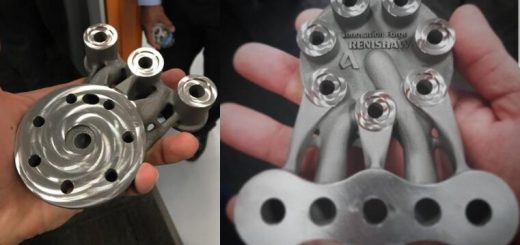New Safran Additive Manufacturing Campus on Track
Additive manufacturing (AM) offers a wealth of opportunities for Safran to differentiate its products and sharpen their competitive edge. That’s why we’re bringing all of our AM activities under one roof at a new site called Safran Additive Manufacturing Campus. Construction of this Factory of the Future began in March. We take a quick tour of the project.
Whereas traditional “subtractive” machining processes work by removing metal or other materials, additive manufacturing makes a part by building up fine layers of a metallic powder or other feedstock, melted by a laser beam or other means. This production revolution affords many advantages, enabling truly disruptive designs, greater flexibility, weight and material savings, a chance to break the monopoly of forging and casting companies, and the ability to craft complex parts more cheaply than by machining or parts that would otherwise be impossible to make using conventional technologies.
 Image via Safran
Image via Safran
![]() Accelerating and optimizing to add value
Accelerating and optimizing to add value
Safran is now seeking to exploit the potential of additive manufacturing, an area it has been working on for nearly 20 years. Today, the technology has reached maturity and some firms are beginning to employ it to make production parts. But to accelerate the process, every step involved had to be brought under one roof, from design and development to engineering and fabrication. This inspired the creation of the Safran Additive Manufacturing Campus, a dedicated new entity. “AM involves so much more than just 3D printing,” explains François-Xavier Foubert, Safran Additive Manufacturing Campus CEO. “A lot of the value it adds lies in design and finishing. To make a leap forward in production rates and competitiveness, we need to optimize the entire process and bring together functions previously housed in separate facilities.”
![]() A modern, eco-friendly facility
A modern, eco-friendly facility
The new campus is set to open its doors at Le Haillan, near the Safran Ceramics site. Covering some 12,500 square meters (135,000 sq ft) of floorspace, it will house research, design, development, engineering and production activities, as well as support functions. The factory will have up to 50 3D printers capable of handling a range of materials (aluminum, titanium, nickel-based alloys and polymers) to make different parts (vanes, structures, cases, equipment, etc.). “The digital dimension will also be omnipresent,” says François-Xavier Foubert, “because AM is based on an integrated digital production system, from design to fabrication.” Last but not least, the line will be classified “low-carbon” and powered exclusively by electricity or waste heat recovery.
![]() Upskilling
Upskilling
Ultimately, the campus plans to have some 200 employees working in an environment tailored to additive manufacturing. There are a number of positions to fill, in research and technology, production and many other areas. “AM calls for new know-how, notably in 3D printing line design and control,” stresses François-Xavier Foubert. “We’re going to set up a training facility to support upskilling of employees who join us, as well as those working in AM Group-wide. We’re also forging partnerships with engineering schools to train tomorrow’s specialists.”
Construction got underway mid-April and is scheduled to be completed by the end of the first quarter of 2021.
Source: Safran




Recent Comments